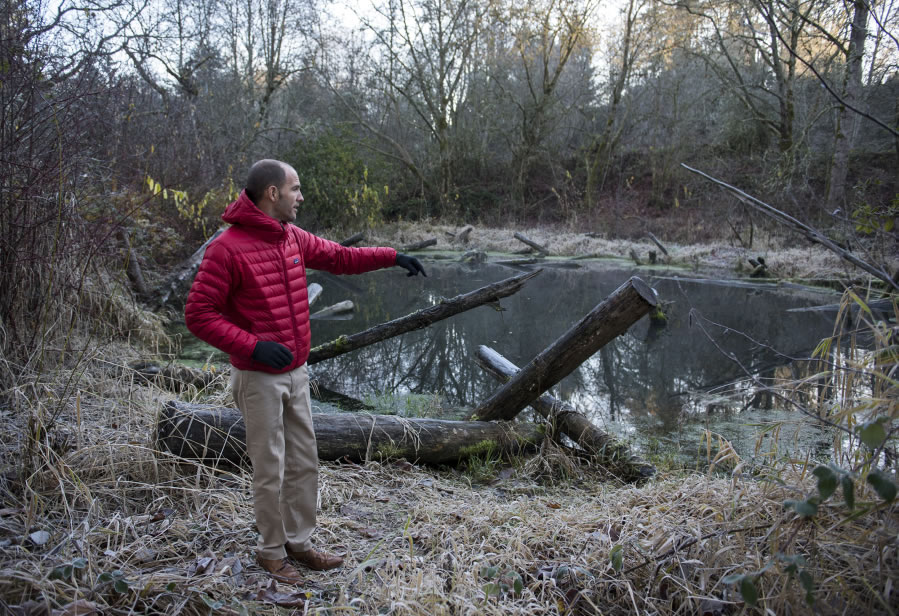The Salmon Creek Watershed Council that has championed restoration, stewardship and advocacy for the rapidly urbanizing riparian area for more than a decade is facing something of a watershed moment that could determine its future.
Council members say they’re optimistic they can build on the success they’ve had and the leadership and volunteers who are currently active, but they concede they need more input and involvement from the community to move forward.
Maury Harris, who chairs the Watershed Council, said recently he and other members wonder if it’s time to dissolve the nonprofit.
“We’re trying to get more people in and get new voices heard,” he said. “If we don’t see interest from the community, then that shows, maybe, the organization isn’t needed.”
Harris can easily name a highlight reel of successful projects the nonprofit has undertaken over the years, from organizing educational events to highlight the plight of migratory salmon to mapping previously uncharted streams in the watershed to adopting Pleasant Valley Park long term.
He believes the organization’s work in the Salmon Creek watershed has benefitted the waterway and the community. But the organization is working with about half the number of board members it originally started with, which puts a big load on the shoulders of those who are involved.
That extra weight, plus internal burnout and waning interest from the volunteer community, is stymieing the uptake of new projects.
“We’ve seen board members falling off that had been here a while and we haven’t seen, like I said, a lot of community support,” he said. “Our volunteers have always been sparse and one-off. If you’re not getting those volunteers to come out for one-day projects, it’s hard to get them involved at a board level to take on more responsibility.”
The Watershed Council’s mission is to “engage and inspire community investments in the Salmon Creek Watershed for the protection and enhancement of its natural resources.”
But its newest member thinks that original mission has been slipping away.
“We’ve been having conversations at meetings all year about what our projects are going to be, what’s our niche in the watershed. We need more people,” said Morgan Clay. “I think we each, everyone of us, has our own idea of what the mission should be, then we just get caught in the weeds of what it could be.”
Clay, a water resources designer, joined the organization about a year ago. She had previously volunteered with a similar watershed organization in Northwest Oregon. When she moved to Southwest Washington, she thought the Salmon Creek Watershed Council was a natural fit.
“I had pretty high hopes about what it would be,” she said.
She was excited to go to her first volunteer event, a monitoring project in a park, to see what the turnout would be like, but that didn’t last long. The only people who showed up were her and two other board members.
“It was kind of a drag, I guess,” she said. “But I take it as a challenge to do better next time. That’s my personality — like, ‘Well, if it’s broke, let’s fix it.'”
The way Clay and the other members want to fix it is by finding people who want to tend to the watershed. They’re especially interested in connecting with people who live along Salmon Creek, especially along its northeastern reaches, to learn what the needs are.
“We want to hear from people who live in the watershed and what they think,” Clay said. “Maybe that’s the niche the council fills.”
More information is available at salmoncreekwatershed.org.




